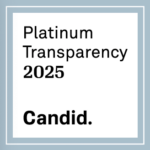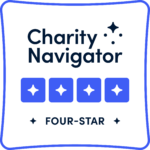Friends of Cancer Research (Friends) and the U.S. Food and Drug Administration (FDA) have been working together for many years on an idea known as breakthrough therapy, and it has produced results beyond anyone’s hopes. Said Ellen Sigal, PhD, Friends Chair and Founder, “When we were first talking about what the breakthrough designation could do, I thought we’d get maybe 2 drugs a year that fit the criteria, but now 40 have been approved, one-third of which are anticancer drugs. Breakthrough therapy has changed the culture of cancer drug development.”
Stephanie Dunn Haney, a patient advocate who has non–small cell lung cancer, agreed. “I’ve taken two breakthrough drugs over the past 5 years and have greatly benefited from them. I’m living a relatively normal life now, and in fact, if it weren’t for the breakthrough program, I wouldn’t be here at all.”
These and ensuing remarks were made at an Friends briefing held at the U.S. Capitol in mid April to explore key lessons learned and to discuss future strategies.
Breakthrough Therapy Defined
The FDA can designate a new drug as breakthrough therapy if it is intended to treat a serious or life-threatening disease, and preliminary clinical evidence suggests it provides a substantial improvement over existing therapies. The designation, proposed in 2011, is part of the FDA Safety and Innovation Act passed in July 2012. Since that time, the agency has had more than 300 requests for breakthrough designation; it has granted more than 100.
Once the FDA grants the designation, the agency and the sponsor work closely together in an “all hands on deck” mode to determine the best way to test the drug and get it approved quickly. This approach is especially relevant for targeted therapies, which often show major clinical activity early in their development. When this happens, and when existing treatment options are not enough, the traditional, multiphase, sequential development process may not be appropriate, and new ways to design and conduct clinical trials are tried.
Janet Woodcock, MD, Director of the FDA Center for Drug Evaluation and Research and the person credited with using the word “breakthrough” for this purpose, said that pharmaceutical science and the way clinical trials are done have advanced a great deal since establishment of the breakthrough concept. “For example, we now have the expanded phase I cohort idea; we are using various targeted therapies in combination; we are rethinking how we do all of drug development; we are learning to ask and answer more than one question at a time; and we are rethinking clinical trials—all to speed development.”
At the briefing, Sen. Michael Bennet (D-CO), one of the sponsors of the Advancing Breakthrough Therapies for Patients Act, said that “incredible advancements” have been made in the 7 years since the first meeting about the designation. “There are 78 drugs in the pipeline right now—half of them for cancer. I’m very optimistic about the future of this designation.”
Effect of Breakthrough on Drug Development
Breakthrough has had an effect on a number of key factors: development time, review time, pivotal trial phase, and use of additional regulatory pathways. An analysis published in the March 2, 2016, issue of Nature Reviews Drug Discovery compared the characteristics of novel anticancer drugs approved with and without breakthrough designation from January 1, 2013, through December 31, 2015.1 During that time, the FDA approved 29 anticancer agents, 41% of which had breakthrough designation. Other observations follow:
- Drugs with breakthrough designation were approved nearly 3 months earlier than those without it.
- Premarket development time (from submission of an investigational new drug to submission of an new drug application license) was 2.2. years shorter for breakthrough drugs.
- Of the 12 approved breakthrough oncology drugs, 66% were approved based on phase I or II data. Of drugs without breakthrough designation, 24% were approved based on phase II data and none on phase I data.
- All the breakthrough drugs received priority review compared with 71% without the designation. Of breakthrough drugs, 75% received accelerated approval compared with 24% of the others. This finding may suggest that the FDA is more willing to take a measured risk in approving drugs that show early evidence of substantial improvement over available therapy.
- Orphan designation was common among both groups.
The Nature Reviews Drug Discovery article went on to note that accelerating breakthrough drugs means a shorter median premarket clinical development time but not total development time. Development does not end at accelerated approval, because the FDA requires postmarketing confirmatory trials.
“In addition, the data set is small, necessitating caution in drawing conclusions on the extent to which breakthrough designation decreases premarket clinical development time. Nevertheless, the data presented here provide preliminary evidence of the positive impact of the breakthrough therapy designation in oncology,” the authors wrote.
Mathias Hukkelhoven, PhD, Senior Vice President, Global Regulatory Affairs, Bristol-Myers Squibb, noted that the real promise of these drugs is in the faster development time. “We are working on breakthrough agents for hepatitis C and HIV as well as cancer, particularly in the area of predictive markers and surrogate endpoints. Moreover, we have found an improved relationship with the FDA to be one of the biggest benefits of the new designation.”
This has been a common positive reaction to the breakthrough designation: changes in the way that drug companies and the FDA relate to one another, that is, cooperative involvement within a company (even sometimes between companies) and between companies and the agency—from almost adversarial at times to more collegial.
Kate Rawson, Editor, Prevision Policy, a Washington consulting firm to the pharmaceutical industry, served as moderator of the panel and noted that new trial designs will be one of the many benefits of the breakthrough designation. Dr. Hukkelhoven added that there will be more single-arm trials if the treatment effect is large enough, resulting in the need for fewer trial subjects and faster approval.
And, said David Ross, PharmD, MBA, Senior Director of Global Pharmaceutical Regulatory Affairs, AbbVie, “These drugs are producing huge benefits. Science will drive development in all therapeutic areas, not just oncology. Nevertheless, cancer patients are likely to be among breakthrough’s major beneficiaries.”
Dr. Sigal reminded everyone that this good work is done for patients. “Breakthrough is one of the ways in which all sectors work together toward a common goal: to get patients into the right treatment earlier, that is, treatments that really work for them.”
http://www.ascopost.com/issues/may-10-2016/breakthrough-therapy-efforts…

